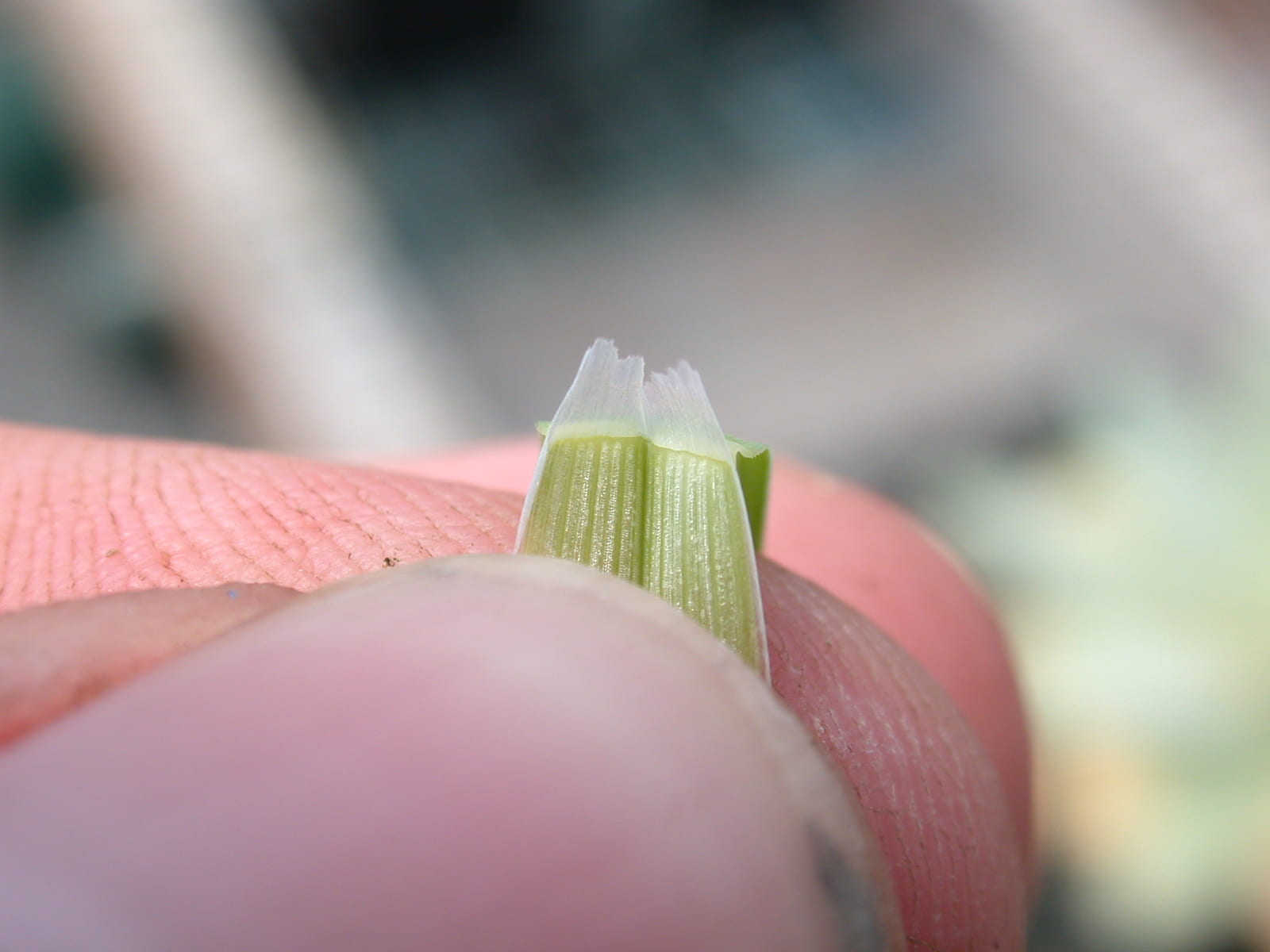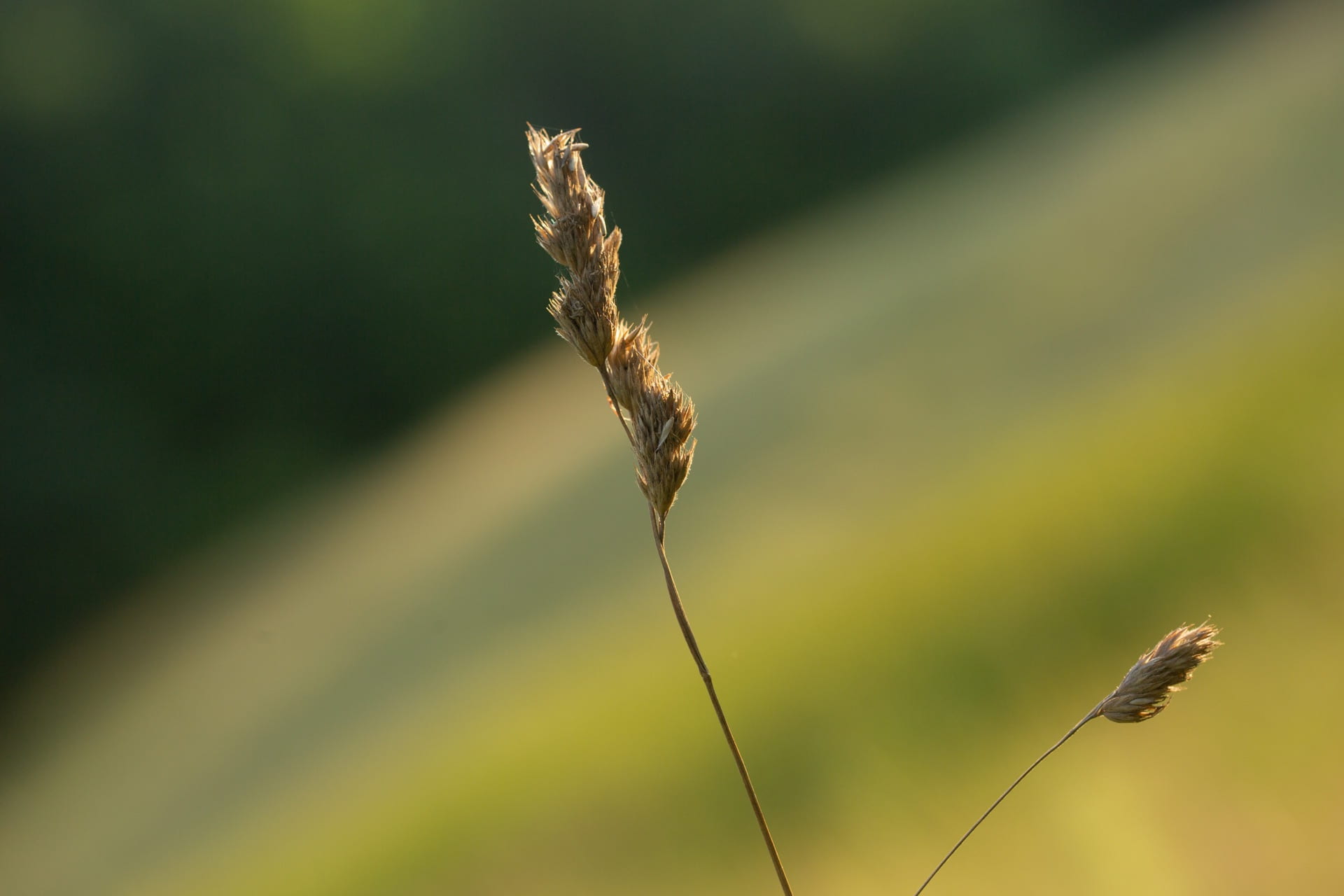Scientific name: Dactylis glomerata
Other names: cocksfoot
Orchardgrass (Dactylis glomerata) is a cool season, non-native perennial. It is considered a weed in small fruit systems in NYS; however, it is also grown as a crop for forage and other uses. It grows well in moderate to well drained soils, and in a wide range of soil pH (5.8-7.5). It can also grow in a variety of soil textures (clay, gravelly loams), and a range of soil depths.
Identification
Seedlings: Leaf bud is folded.

Close up of membranous ligule of orchardgrass.
Photo by Randy Prostak of UMass Extension Landscape, Nursery and Urban Forestry Program
Purple flower head of orchardgrass.
Photo by Catherine Herms of Ohio State University, via Bugwood.org
Green flower head of orchardgrass.
Photo by Ohio State Weed Lab, Ohio State University, via Bugwood.org
Similar Species
Table 7: Shows orchardgrass (Dactylis glomerata) similarities and differences in identification compared to its similar species: goosegrass (Eleusine repens).
| Species | Orchardgrass (Dactylis glomerata) | Goosegrass (Eleusine repens) | ||
|---|---|---|---|---|
| Similarities | Leaf bud is folded; ligule is membranous | Leaf bud is folded; ligule is membranous | ||
| Differences | Membranous ligule is larger than goosegrass; size as a seedling (0.12-0.20 in or 3-5 mm), mature plant (0.20-0.30 in or 5-7 mm) | Membranous ligule is smaller than orchardgrass (≤0.08 in or 2mm), cleft in the center |
Management
Chemical control
See Cornell’s Turfgrass and Landscape Weed ID for more identification and control options. You can use CCE Eastern NY Horticulture’s herbicide lookup tool to find the efficacy of various herbicides on orchardgrass. For general guidance on weed control, get the latest edition of the Cornell Crop and Pest Management Guidelines.
Non-chemical control
No management specific to orchardgrass was found; manage as you do other annual grasses.
Herbicide resistance
Reported as of 2021:
None
Visit the International Herbicide-Resistant Weed Database homepage for more information on resistance.
Resources
The USDA NRCS Idaho Plant Materials Program has this plant guide on orchardgrass, which discusses identification and management as well as other important species specific info.
The University of Missouri’s Extension has information on orchardgrass as a forage crop.
This blog post discusses orchardgrass and quackgrass with identification as its main focus.
Uva R H, Neal J C, DiTomaso J M. 1997. Weeds of the Northeast. Book published by Cornell University, Ithaca NY. The go-to for weed ID in the Northeast; look for a new edition sometime in 2019.









